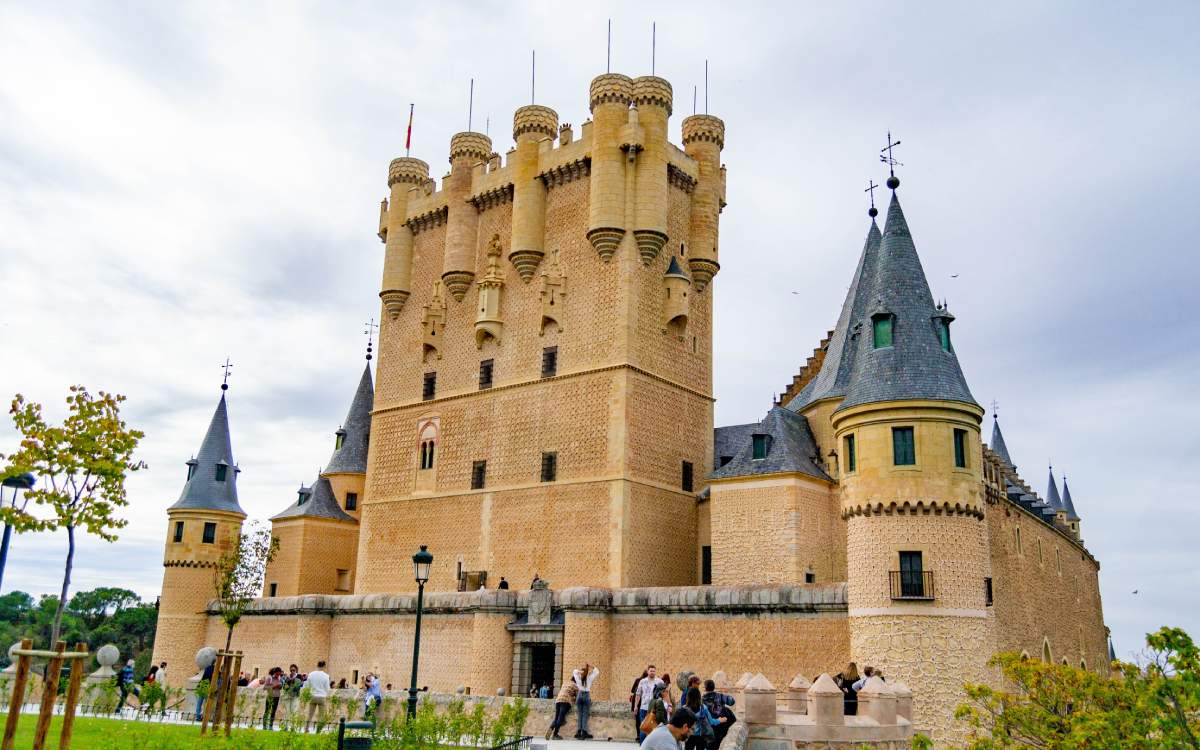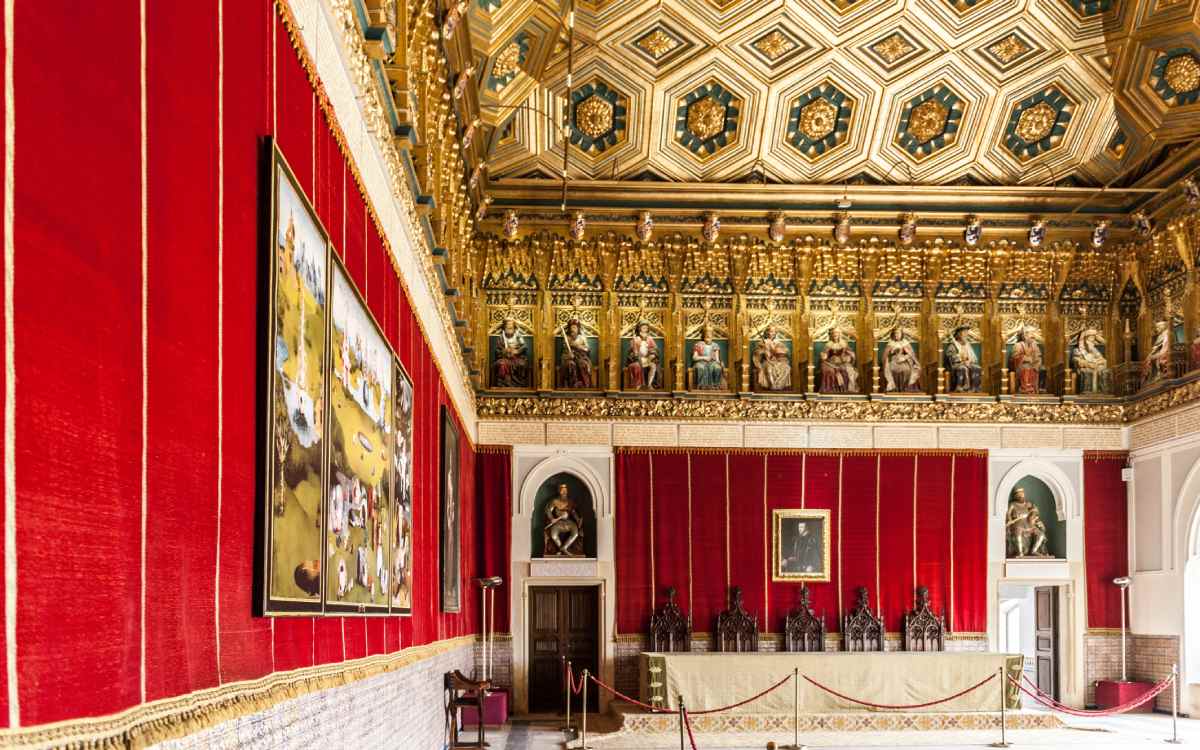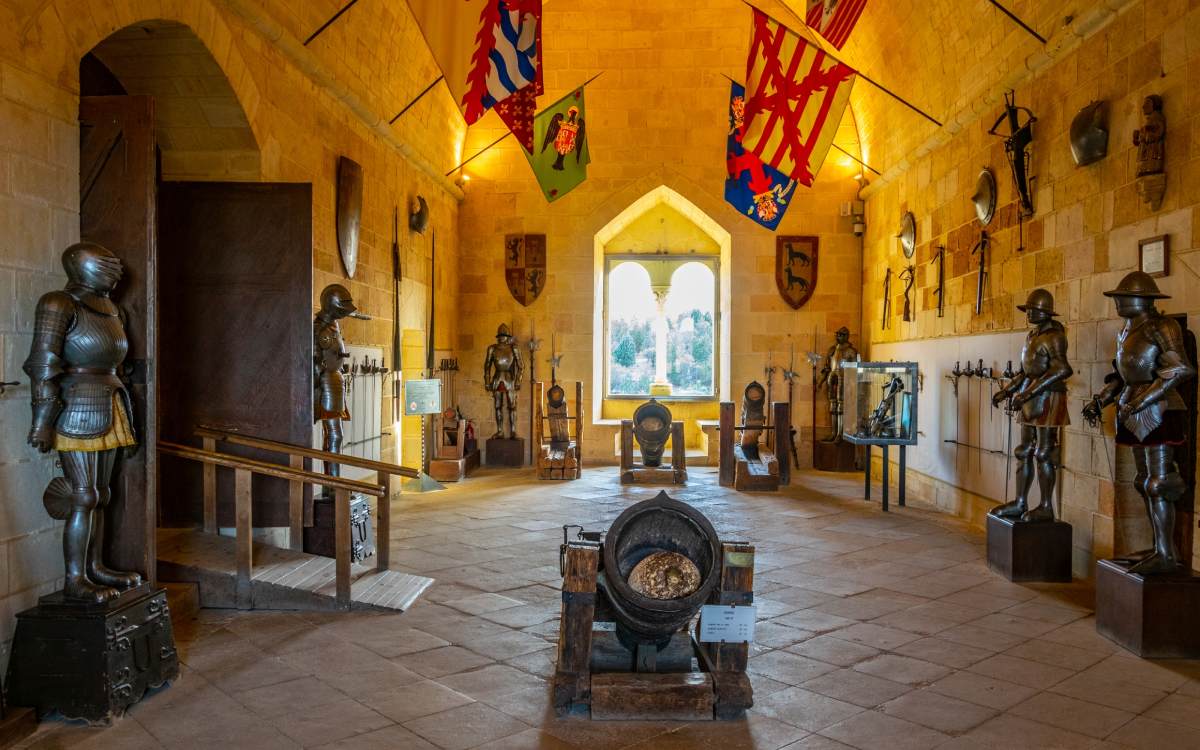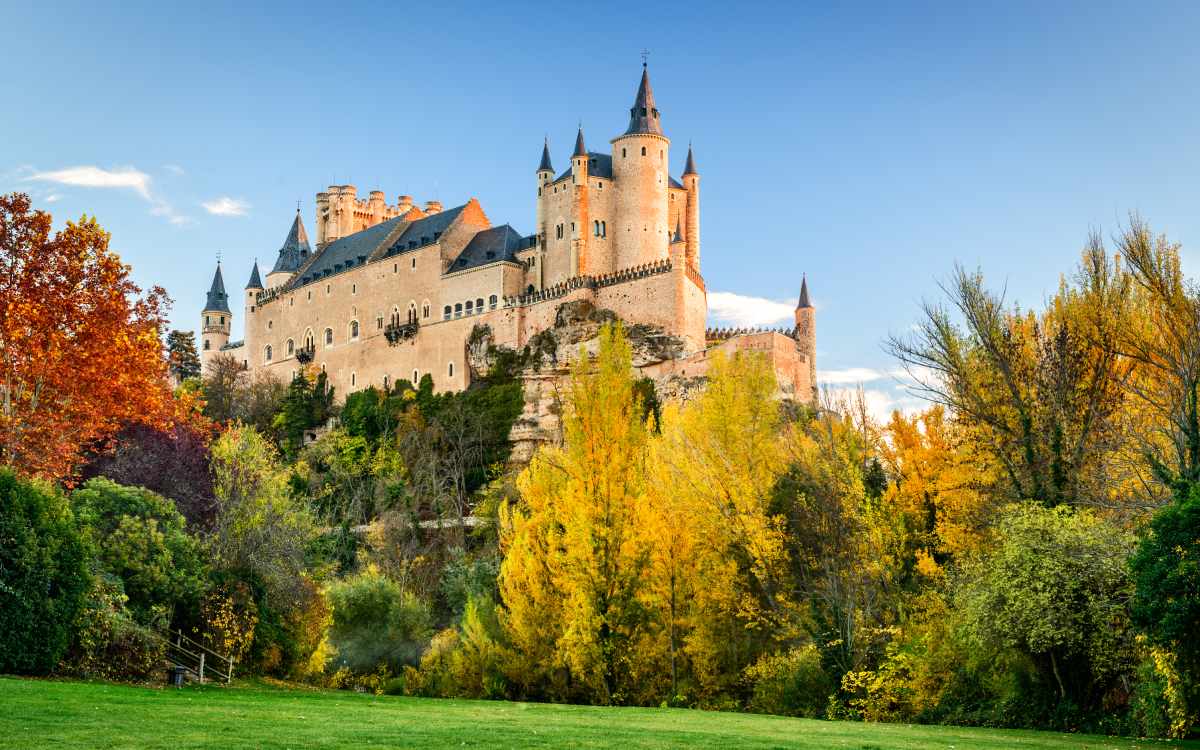
Segovia, located in the south of the Castilla y León region where the Eresma, Ciguiñuela and Clamores rivers meet, has plenty of outstanding features. Both the old city centre and its aqueduct were declared World Heritage Sites by UNESCO in 1985. Additionally, its cathedral, the Nuestra Señora de la Asunción y de San Frutos, was the last of its kind in Spain to be built in the Gothic style. Its beautiful contours have made it worthy of the name The Lady of Cathedrals. However, perhaps what amazes visitors the most is the fairy tale fortress that inspired Walt Disney himself: the Alcázar de Segovia.

There are many enjoyable lookout points at the Alcázar de Segovia. | Shutterstock
The Alcázar de Segovia was constructed at the beginning of the 12th century and the castle is one of Spain’s most visited monuments. It should be noted that the first documents in which the words “castillo de Segovia” and “Alcaçar” appear date from the period between 1124 and 1139. Additionally, the granite stones used in its construction are similar to ones from the aqueduct, which indicate that there may have already existed a structure during the Roman period.
A total of 22 monarchs have passed through this fortification and it has been the site of royal weddings, battles and other events. The Alcázar de Segovia has served as a Roman fort, a military fortress, a royal palace, a state prison, the guardian of the royal treasury and the Real Colegio de Artillería. Furthermore, on the first floor of this castle, the Archivo General Militar was installed in 1898, where it has remained ever since.
Although the name Alcázar comes from Arabic, it has no other known link to this civilisation. In fact, the castle’s true history began during the Spanish Reconquista and it has subsequently undergone various refurbishments.
If the visitor is wondering what to see at the Alcázar de Segovia, the list is long. Indeed, just the sight of the castle from afar is marvellous in itself, but it is worth exploring both its inside as well as its outside.

Entrance to the Alcázar. | Shutterstock
Located in the exterior area of the castle, the Patio de Armas is where numerous events have taken place throughout its long history. The patio was designed in the Herreran style, an architectonic style prominent in late Spanish Renaissance architecture. Though constructed by Francisco de Mora under orders of king Felipe II in 1587, the patio’s design was clearly influenced by Juan Herrera.
Also found outside the castle is the Torre del Homenaje or Torre de Juan II, constructed between 1440 and 1465. Placed upon an older, thirteenth-century tower, the current one rises 80 metres in height and has a lookout point at its summit. To reach the top, one must climb precisely 152 steps, but it is well-worth the effort. Once atop, the panoramic views of Segovia on offer are captivating.
There is a 26 metre-deep defensive trench located in this part of the Alcázar, which can also be visited. Excavated over centuries, the stones removed from this area were subsequently used in the fortification’s construction. It should be added that years ago a drawbridge once spanned this trench, though nowadays it is a permanent stone bridge.

Interior of the Alcázar. | Shutterstock
The interior of the Alcázar de Segovia contains a chapel that the monarchs once used to attend mass. Additionally, there are several noble halls including the Sala de Ajimeces, which served as the castle’s main hall for years.
The fortification’s interior also includes the Sala de la Chimenea and the Sala de la Galera. In the first of these rooms, among other things, there is a depiction of how the fortress appeared before the refurbishment of the roofs. In the Sala de la Galera, it should be noted that, due to a fire that occurred in 1862, everything has been reconstructed with the exception of the original lower frieze.
Also in this area of the castle, one may visit the Sala de las Piñas, whose stained glass depicts Alfonso VII together with his daughter Berenguela. The Sala del Trono contains decoration credited to king Enrique IV, while the body armour on display there came from Urones de Castroponce. Although the original was destroyed in the fire, it has since been replaced by an identical one from the same maker.

Interior of the Alcázar de Segovia. | Shutterstock
In the Sala de Armas, located on the ground floor of the Torre del Homenaje, one may find suits of armour, medieval mortars, swords and old banners. For its part, the Cámara del Tesoro once stored the kingdom’s property deeds.
Of course, the previously mentioned Real Colegio de Artillería museum, which is located next to the Patio de Armas, and the Archivo General de Segovia should not be missed either.

The Alcázar de Segovia seen from San Marcos field. | Shutterstock
The Alcázar de Segovia opens its doors to the public everyday of the week. From April to October, visiting hours are between 10a.m. and 8p.m. while from November to March, doors open between 10a.m. and 6p.m. On the 24th and 31st of December, visiting hours are from 10a.m. to 2p.m. The palace and the museum can be visited in approximately 45 minutes and it should be noted that visits to the Torre de Juan II are limited to no more than 25 minutes.
It is recommended to purchase tickets online in order to avoid long queues. Nevertheless, guided tours of the fortress can only be purchased on site at the ticket window. Tickets for guided tours can be bought up to five minutes before any tour, which lasts approximately three quarters of an hour. The last guided tour during the summer season begins at 6:30p.m., whilst the last tour during the winter season begins at 4:00p.m.
You can also read this article in Spanish and French.
Follow us on Facebook!